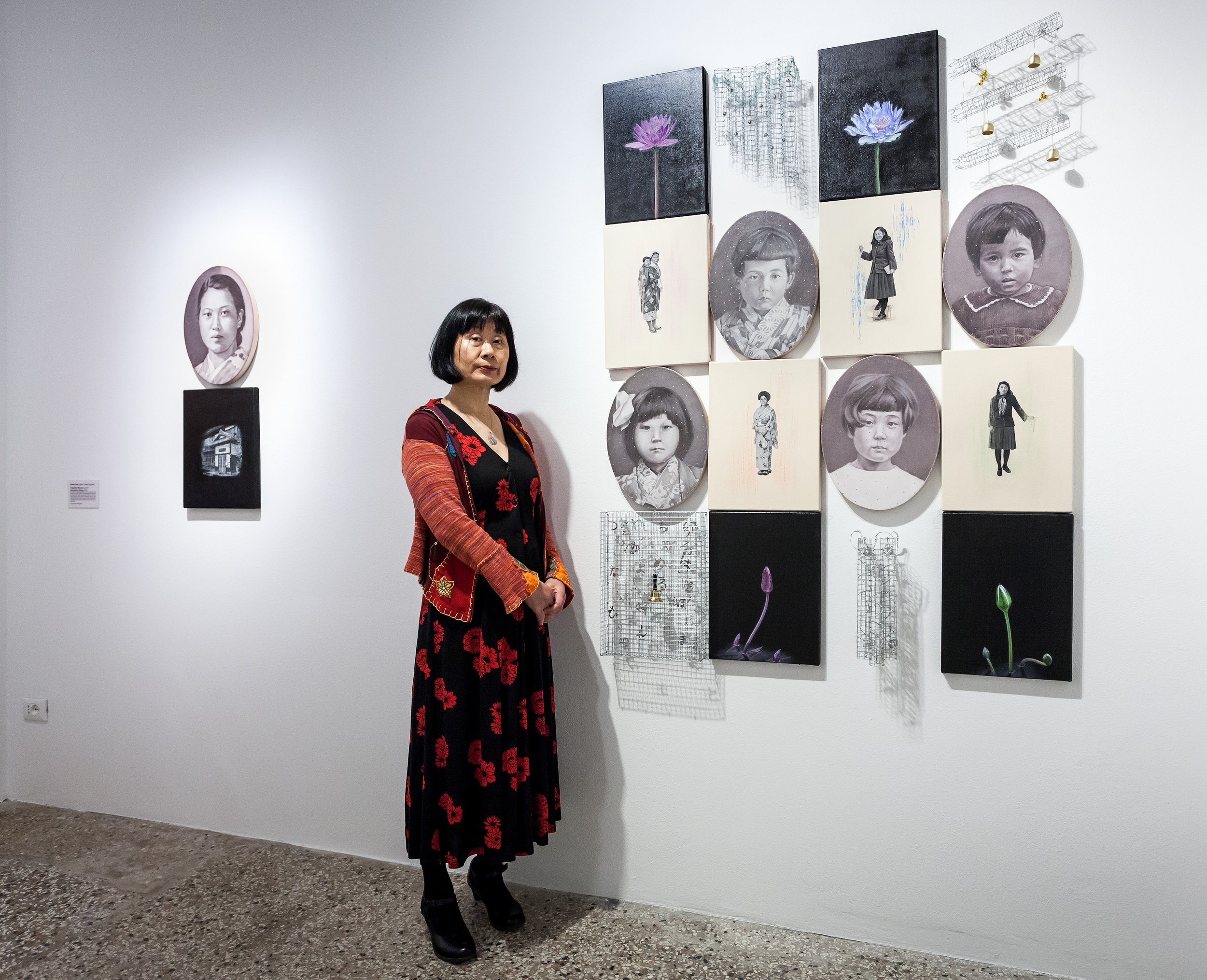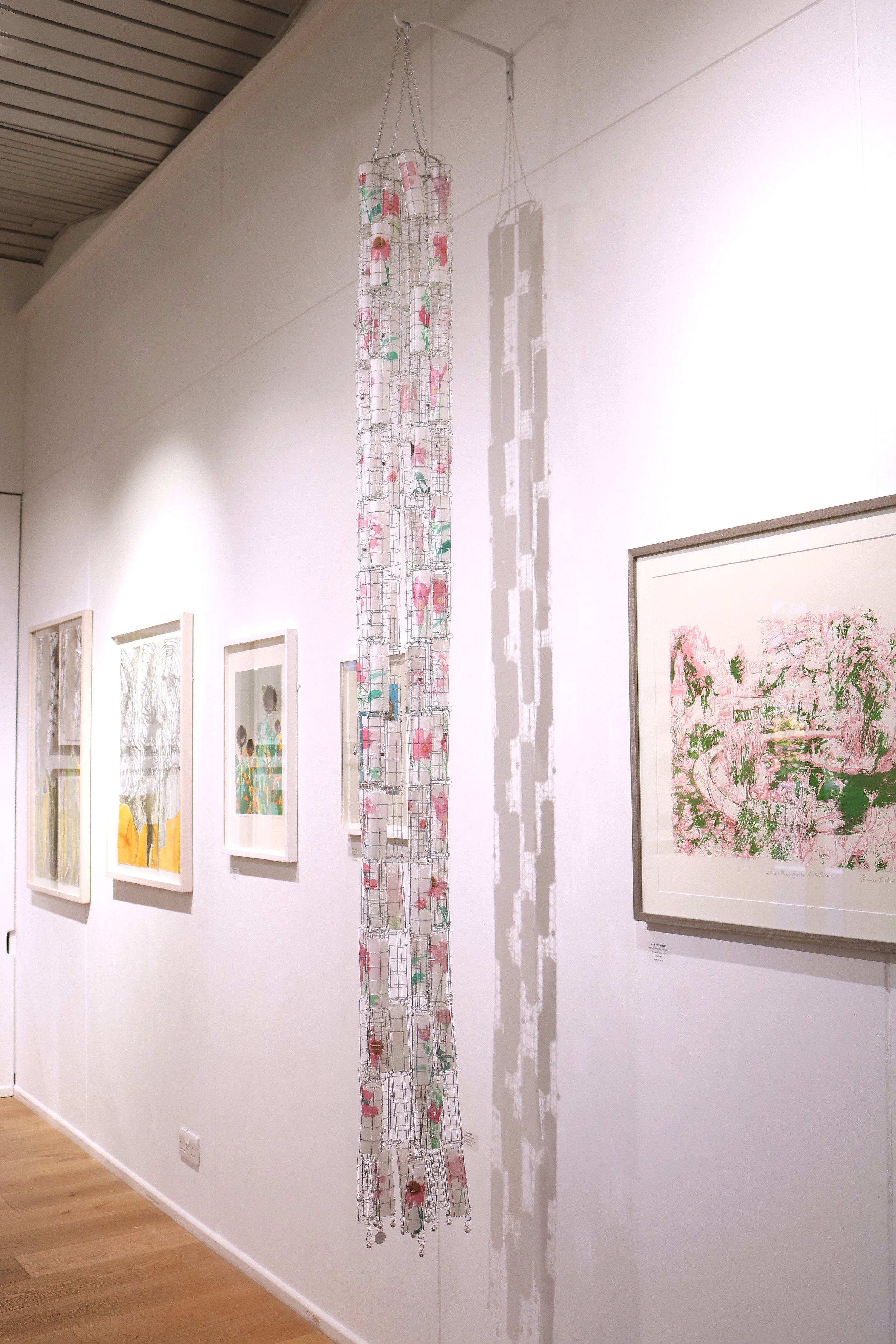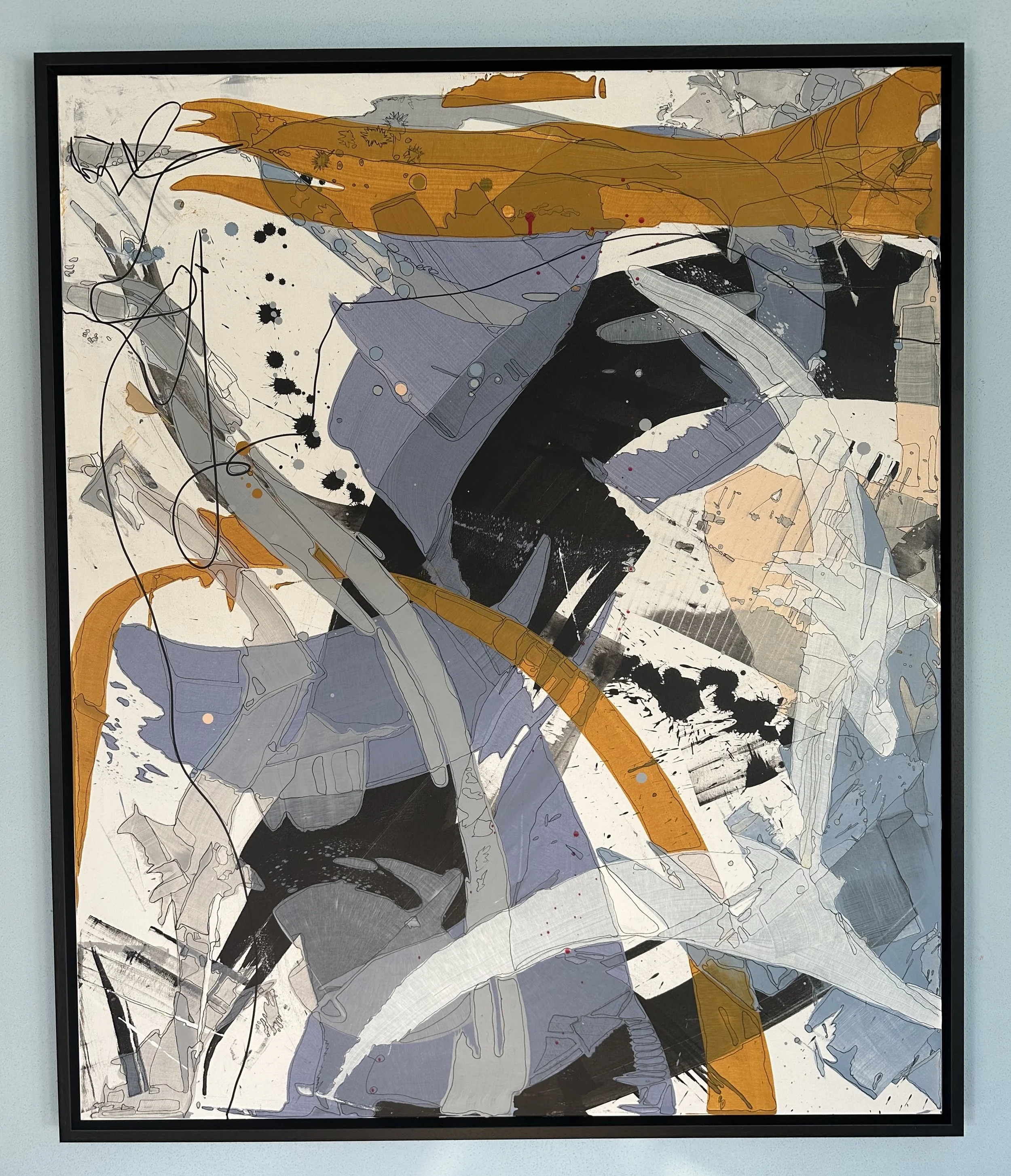Interview with Emiko Aida
Emiko Aida was born in Tokyo, Japan and graduated from MA, Fine Art, The Tokyo University of Arts / MA Printmaking, Royal College of Art, UK. She is currently a painter, printmaker and mixed media artist living in London, UK. Her work is exhibited in the U.K., the U.S.A., Italy, China and Japan and in many private, public and corporate collections including the New York Public Library, USA, Guangdong Museum of Art, China, Ashmolean Museum, Oxford, UK and Victoria and Albert Museum, London, UK. She is a member of Royal Society of Painter–Printmakers, U.K.
My work is intended to be a prayer’s gate; I use the colours, flowers, light reflections, bell sounds, tube shapes etc, which are essential ingredients for major spiritual practices. Meanwhile repetition of a subject brings human sensory perception into transitory field like a mantra and images of architectural tiling. I create this field using multiples in Printmaking with wire sculpture. Contemporary arts have avoided spiritual issues, but the increasing popularity of Yoga and meditation practices reconsider these issues. Quantum Physics Theory is helpful to understanding the invisible world. Undoubtedly, we are living in challenging times now. What can I do in this era as an artist? My consciousness is repeatedly asking me this question.
You've lived in two of the world's most dynamic urban environments, Tokyo and London. How have these contrasting urban landscapes influenced your artistic vision and the themes you explore in your work?
I grew up in a Tokyo suburb surrounded by nature and now reside in a “Queen suburb” of London, a place with numerous parks under the jurisdiction of the local council. Both places are situated away from the bustling city centers and characterized by their natural surroundings. My childhood experiences cultivated my sensitivity to nature, allowing me to appreciate the beauty in even the smallest pockets of greenery, like a plant growing from a crack in the pavement in London.
Despite the adversity of natural disasters, Japanese art showcases the kindness of nature. I do it in my art too. Nature is not perceived in the same way as in Western thought, where it is seen as a powerful entity to be conquered.
Throughout your career, you've received numerous awards and recognitions. How has your artistic style and approach evolved over the years, and in what ways do you think this evolution has contributed to your success and accolades?
I value those who notice and appreciate my work. To me, their recognition serves as both a reward for my past efforts and encouragement for my future growth. Awards, however, aren’t a guaranteed path to becoming a successful artist. True success for artists often lies in defining what it means personally. I’ve always followed my unique path.
As an artist who has achieved significant success, what are your main sources of inspiration, and how have they changed or remained constant throughout your career?
Much like life’s ups and downs, the artistic journey is filled with its share of unpredictability. I remain uncertain about the exact recipe for success in the art world. My approach has been to commit myself to my craft and seize opportunities as they present themselves. I may have missed some opportunities or made occasional missteps, but I view these as valuable lessons. When seeking inspiration, I quietly turn to the Universe to help guide me in the right direction. I believe I’m still on a journey, yet to arrive at my desired destination, and that keeps me in the midst of a humble exploration.
You mention the fragility and loneliness of humankind and the crossing of lives between reality and illusion in your work. Could you elaborate on how you use your art to navigate and represent these complex themes?
Living in a foreign country on my own magnifies the core questions that are universal to humanity. It is an unavoidably evokes feelings of insecurity, both mentally and physically, which prompts me to conjure images to play with to save my mental health. I used the image of the trees I discovered near the railway tracks by my London studio, to create imaginative images in my artwork. Whether my art reflects negative emotions or any other theme, creating my own artwork serves as a means to alleviate these feelings.
The Lotus flower holds a special place in your work, symbolizing spirituality and beauty amidst adversity. Can you share more about how Eastern symbolism, particularly the Lotus, informs your artistic process and the messages you aim to convey?
The image of the Lotus came from Buddhism, where the Lotus is symbolised as a sacred flower. It grows through mud in ponds and blooms to glorious beauty. The mud means adversity in life. Hopefully humans can learn from the way of the Lotus, as passing through difficulties of life and grow to gain blossom in life eventually. In the East, nature is not a subject to be conquered. They live alongside nature where it is nurtured and inspired. Shinto, Japanese original spirituality takes nature as God. There are many Gods in Japan, Mountain God, Water God, Fire God and so on. It is Panpsychism.
Since graduating from The Royal College of Art, how do you feel your personal journey and experiences in different cultures have shaped your artistic evolution?
Living in another country for so long has has heightened my awareness of cultural disparities. During my journey of personal development, I chose to return to Japan with a fresh perspective to research the ingredients of Japanese culture. This led me to embark on a series of projects centered around Japanese culture. After that, I began to sense the necessity of a more profound exploration, prompting me to delve into the spiritual levels of my work.
As a recipient of the International Prize PEGASUS for the ARTS, you've been recognized for your outstanding artistic merit on an international stage. In what ways do you feel your work resonates with global audiences, and how do you balance maintaining your unique artistic voice while appealing to a diverse international community?
Receiving the prize was an unexpected and delightful moment, catching me by surprise. It encouraged me to continue my journey of creative expression and contribute meaningfully to the betterment of humanity. This experience has led me to a point where my creative endeavors are no longer solely for personal satisfaction but also for the greater good of humankind. Due to the current world changes and situations, we need light to wash away the darkness. I hope my work can do this.
You express a deep interest in the beauty and mathematical aspects of nature, such as the Fibonacci sequence in flowers. How do you integrate these elements of nature and mathematics into your art, and what do they represent for you on a deeper level?
I used the ward, Fibonacci sequence as an example of Universal balance in Nature, and think Mathematics and numbers have a key to find the mystery of nature. As an artist, the beauty of flowers is a mystery to be discovered. Why are flowers so beautiful from a human point of view? Additionally, my fascination with light mirrors my intrigue with flowers. By combining images of flowers and light in my work I hope to reach a deeper level of understanding about nature and humanity.
With your extensive experience in exhibiting your work across various galleries and venues, how do you feel each exhibition has contributed to the evolution of your artistic expression and narrative? Could you share insights into how different audiences and locations have influenced or inspired changes in your approach to art?
Due to the length of my career and a proactive approach to seizing opportunities that come my way, I've had the privilege of showcasing my work in diverse settings. Exhibiting my artwork is an integral aspect of my job as an artist. Each time, I try to do my best without much thinking of what the consequences are. I've encountered a spectrum of reactions from various locations and individuals. Wherever the exhibitions were held, they did not give me many influences, inspirations, evolutional contributions for me to create my future works directly. Exhibitions are a chance to view my works from an objective point of view, which is more beneficial to me. On occasion, these connections have led to exciting artist opportunities, emphasizing the importance of networking and relationships in an artist's journey.
What advice would you give to emerging artists who aspire to achieve a level of success and recognition similar to yours? Are there any particular experiences or lessons from your own journey that you believe are essential for up-and-coming artists to know?
I am still an emerging artist who has a lot of things I want to do, and I am floating on my dreams. Many artists’ advice on art associations’ sites and YouTube are available, but I think being honest to yourself and learning from your own mistakes are the best teachers. Don’t be afraid of trying new experiences, opportunities, and mistakes. The meaning of success is personal and different to each parson. Do not take other peoples’ opinions too seriously. You are your own decision maker.

















